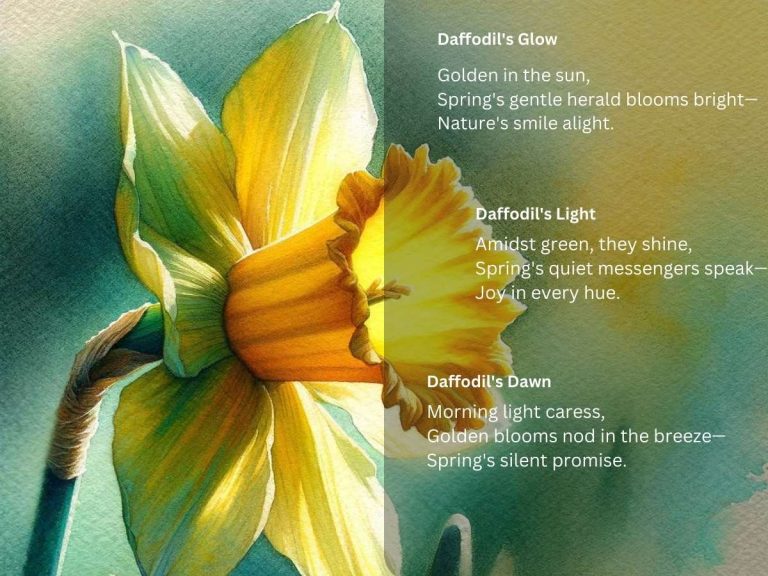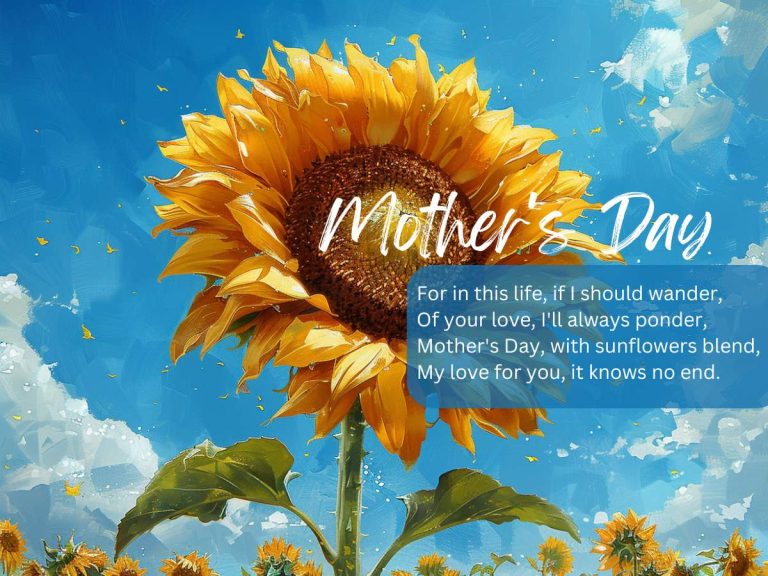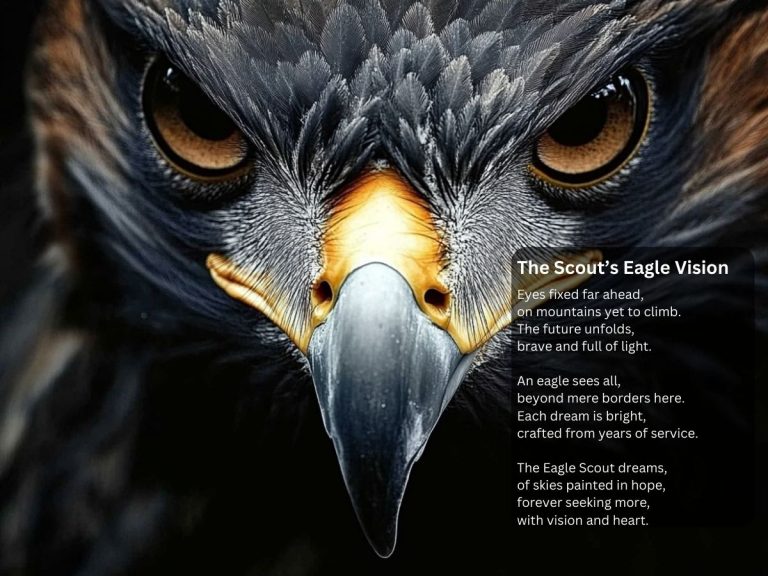Flower Poems for Preschoolers
Table of Contents
In the Garden’s Glee
In the garden, flowers bloom,
"Wow!" we cheer in every room.
Petals bright, with sun's kiss,
Dancing in the breeze, pure bliss!
"Yay!" for reds, and blues, and yellows,
Soft and gentle, like marshmallow.
"Look!" a butterfly so nifty,
Flitting through, oh so swift-y!
"Ha!" the laughter, full and free,
Amongst the blooms, we dance with glee.
Flowers tall, and some are small,
In our garden, we love them all!
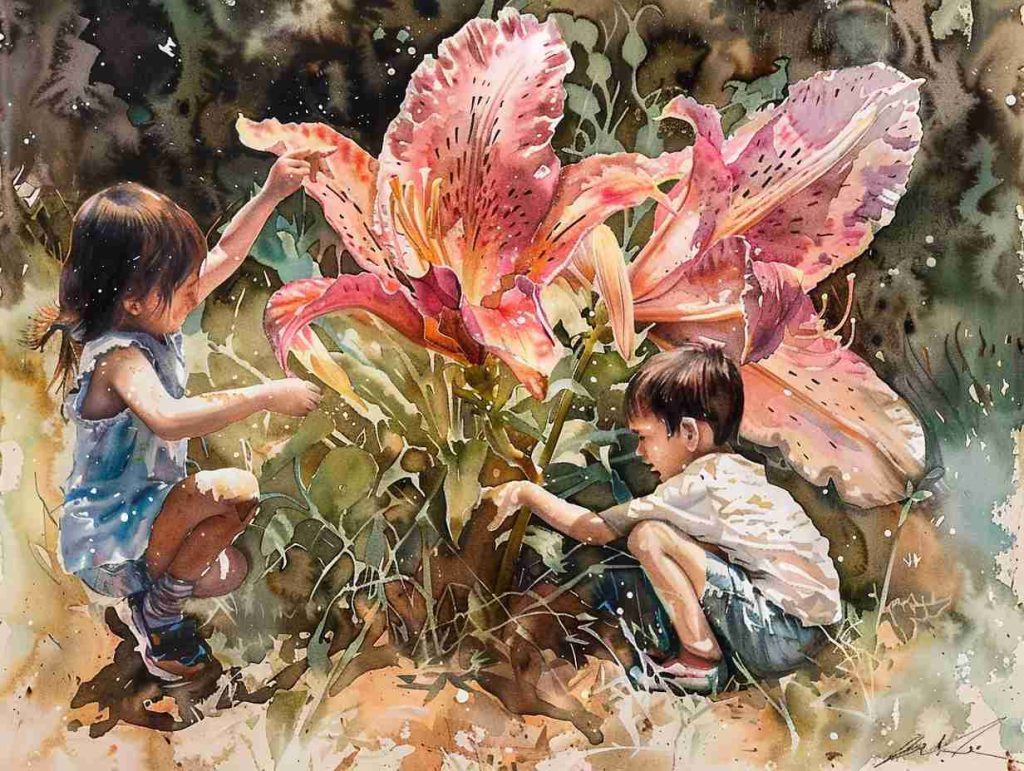
Meaning
“In the Garden’s Glee” is a joyful exploration of a garden from the perspective of preschoolers, emphasizing the vibrant colors, the presence of friendly insects like butterflies, and the unbridled joy that nature inspires in young hearts. Each line is crafted to mirror the excitement and wonder that children feel when they interact with nature, particularly with the simple beauty of flowers. The exclamations “Wow!”, “Yay!”, “Look!”, and “Ha!” punctuate the poem, inviting readers to share in the children’s joy and amazement, making the poem an interactive experience of discovery and happiness.
Inspiration Behind
I was sitting in my garden, watching my neighbor’s kids play. Their laughter, their sudden dashes to a new flower, and their excited shouts when they found a butterfly or a particularly bright flower—it all sparked this poem. I wanted to capture that innocence, the pure joy of discovering the beauty in nature. Each line, each exclamation, came to me as if I were seeing the world through their eyes, where every flower and every moment is a new adventure. It was their unfiltered delight in the garden that inspired me to write, hoping to bottle up a bit of that magic in words.
Petal Parade
"Ooh!" says Mia, eyes so wide,
Flowers blooming, side by side.
"Pretty!" cries Jay, with a grin,
Picking petals, puts them in.
Roses red, violets blue,
Sunflowers that reach the sky too.
"Daisy!" shouts Lee, with a leap,
In the garden, memories we keep.
Buttercups in hands, "Look, they glow!"
Faces shine in sunlight's show.
"Giggle," goes Sam, in the breeze,
Happiness here, is such a tease.
Garden full, our hearts so merry,
With each bloom, we dance and carry.
"Cheers!" we sing, to every flower,
In this garden, every hour.
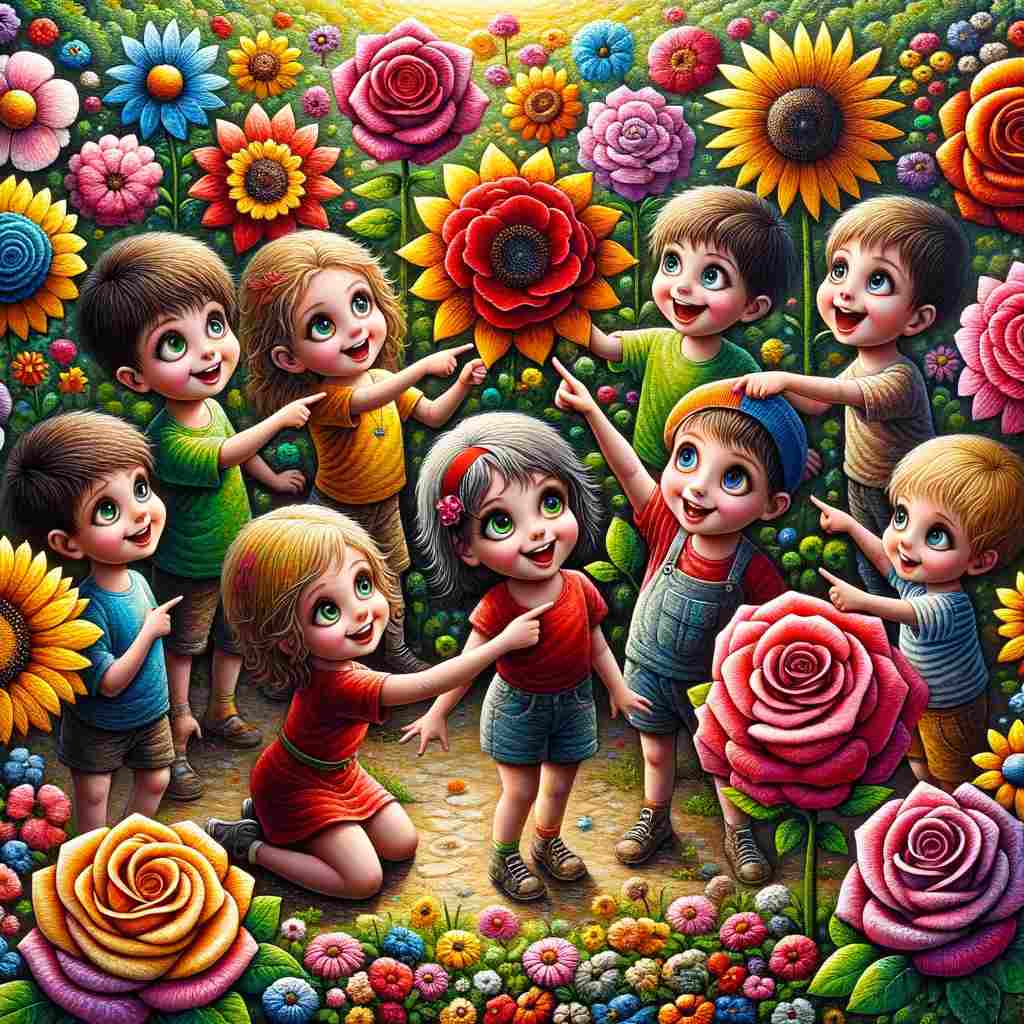
Meaning
“Petal Parade” celebrates the joy and curiosity of preschool children as they explore a garden filled with vibrant flowers. The poem is crafted to echo the delight and wonder of discovery, with each stanza introducing a new flower and the child’s reaction to it. Through exclamations like “Ooh!”, “Pretty!”, and “Giggle,” it captures the spontaneous emotions of children engaged in the simple pleasure of being surrounded by nature. The poem aims to convey the magic of moments spent in a garden, where every flower brings a new adventure and every interaction is filled with joy.
Inspiration Behind
I found inspiration in a local community garden, where I saw a group of preschoolers on a field trip. Their excitement for every new flower they saw, their laughter as they played among the petals, and their amazement at the simplest of nature’s gifts—it was all infectious. Watching them, I was reminded of the pure joy found in the exploration of nature. I wanted to capture that sense of wonder, the uninhibited joy of discovery, and the playful spirit that fills a garden when viewed through the eyes of a child.
Daisy’s Day Out
Daisy danced in morning light,
"Hello!" she waved, so bright and white.
"Yippee!" cheered the bumblebee,
Together, friends, as happy as can be.
"Wow!" said Daisy, "Look at the sky!"
Blue and vast, clouds drifting by.
"Whoosh!" went the wind, with a gentle push,
Daisy swayed, in the garden's hush.
"Come play!" called children, running near,
Daisy giggled, "I'm already here!"
"Yay!" they shouted, with joy they spin,
Around Daisy, a dance begins.
As the sun sets, pink and low,
"Goodnight," whispers Daisy, aglow.
"See you tomorrow," kids say with a pout,
Daisy's day out, what fun it's about!
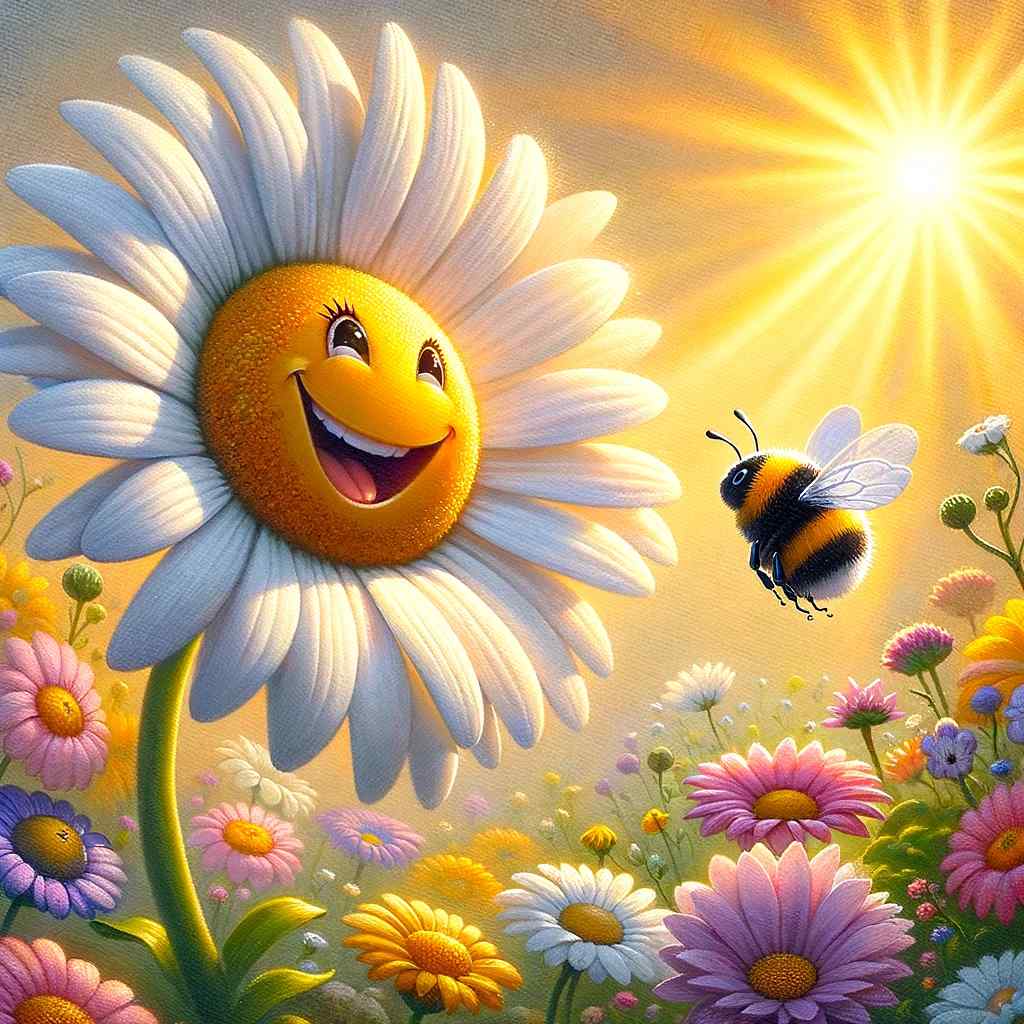

Meaning
“Daisy’s Day Out” is a whimsical tale of a flower character named Daisy, who experiences the joys of the day from sunrise to sunset alongside her garden friends and visiting children. The poem uses short, rhyming lines filled with exclamations like “Hello!”, “Yippee!”, “Wow!”, and “Yay!” to convey the emotions and excitement of both Daisy and the children. It captures the essence of playful discovery and the simple pleasures of nature through the interactions between a lively flower and her playful companions. The poem encourages children to see the world around them as a place of wonder and friendship, emphasizing the beauty of the natural world and the joy of shared experiences.
Inspiration Behind
The idea came to me on a breezy spring day, watching daisies sway in my garden. I imagined one of them, Daisy, as a joyful character who could interact with the world around her. I thought about how children view flowers not just as plants but as part of their play, their imagination running wild with every petal and leaf. Daisy’s character was born from the idea of bringing that imaginative play to life, showing a day in the life of a flower through the eyes of both the flower and the children who find joy in her presence. It was a fun, heartwarming concept that I hoped would encourage kids to see nature as a lively, engaging part of their world.
Poppy’s Tiny Adventure
Poppy peeks at dawn's first light,
"Hi!" to sun, so big and bright.
"Zoom!" goes Bee, in swift flight,
"Fun!" says Poppy, with delight.
Kids come by, with laughs so loud,
Poppy stands, so proud and bowed.
"Pretty!" they shout, in awe, a crowd,
"Thank you!" Poppy blooms, unbowed.
Night falls, stars twinkle above,
"Sleepy," yawns Poppy, with love.
"Goodnight," to all, and moon above,
Dreams of sunshine, and days to love.
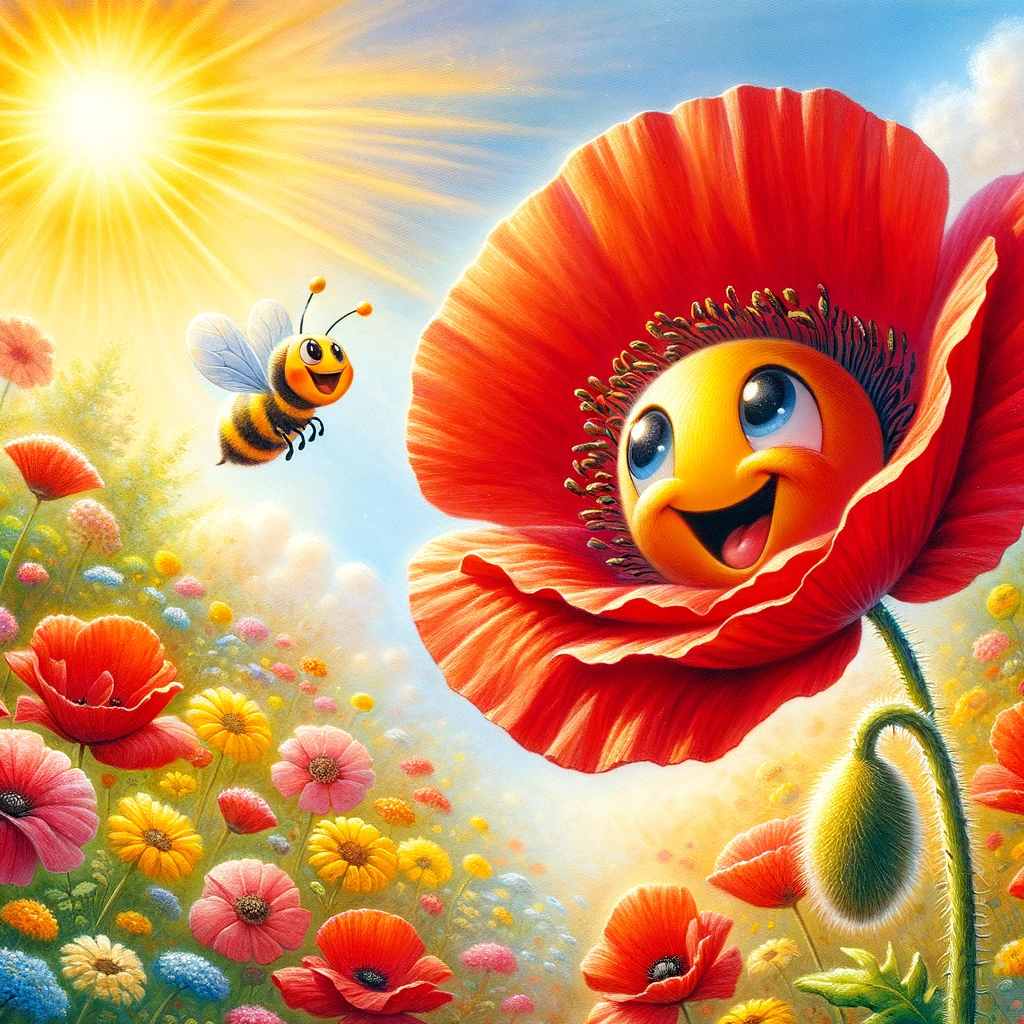
Meaning
“Poppy’s Tiny Adventure” is a short, sweet tale that introduces children to Poppy, a vibrant and friendly flower character. Each line of the poem pairs an action with an emotion, mirroring the simplicity of children’s experiences and interactions. From greeting the sun to playing with bees and being admired by children, Poppy’s day is full of small adventures and joyful encounters. The poem concludes with Poppy settling down for the night, reflecting a day filled with happiness and love. This story encourages young readers to find joy and wonder in the natural world around them, celebrating the simple interactions that make each day special.
Inspiration Behind
I was inspired by the poppies in my garden, which seem to have their little world among the other plants. Watching them sway in the wind and attract bees made me imagine what it would be like if they could talk and interact with their surroundings. I thought about the joy and wonder they bring to people, especially children, who are fascinated by the bright colors and delicate petals. I wanted to create a character that could encapsulate that joy and wonder, making nature’s beauty accessible and relatable to preschoolers through the adventures of Poppy the flower.
End Words
These Flower Poems for Preschoolers and their accompanying illustrations offer a gentle exploration of the natural world through the eyes of flowers and children, blending curiosity, joy, and the simple wonders of everyday moments. They serve as a reminder of the beauty in our surroundings and the connections that can be formed with even the smallest members of nature’s family. Through playful rhymes and vibrant images, we’re invited to see the world anew, with a sense of wonder and appreciation for the magic found in gardens, fields, and the hearts of flowers and children alike.

